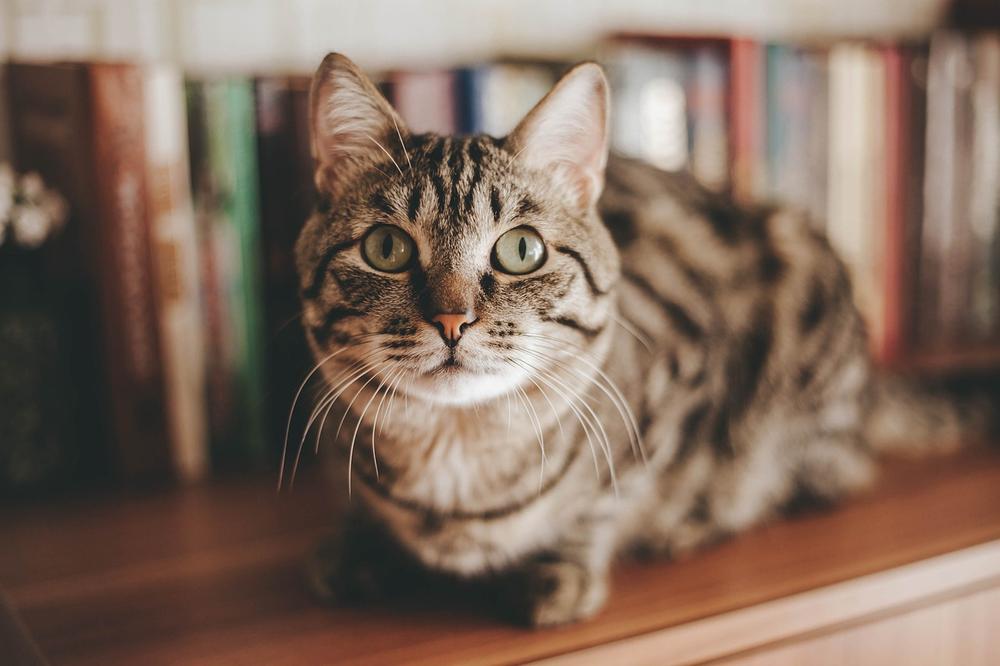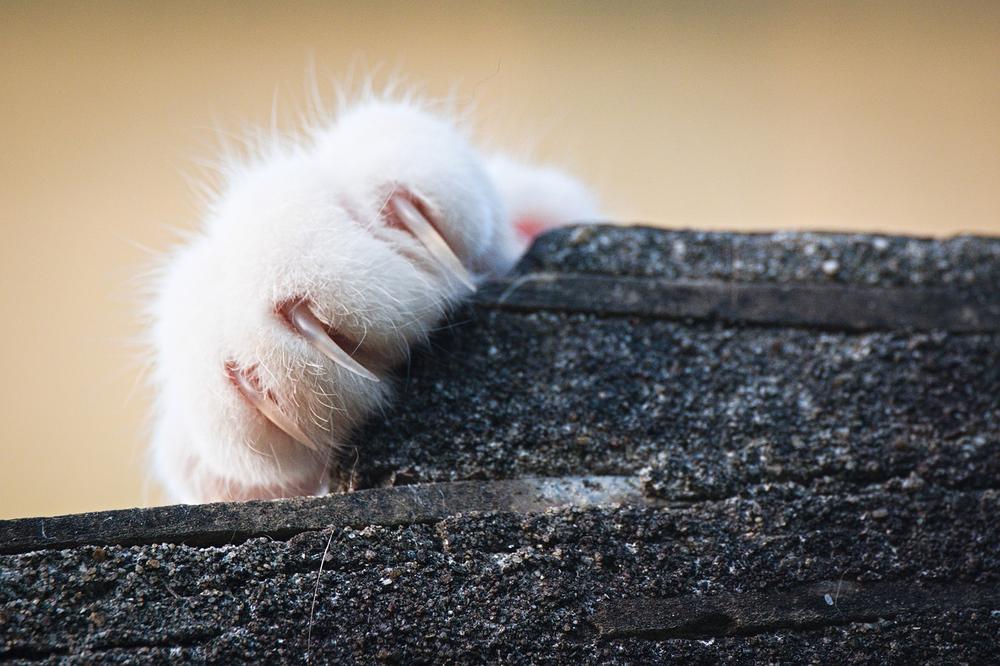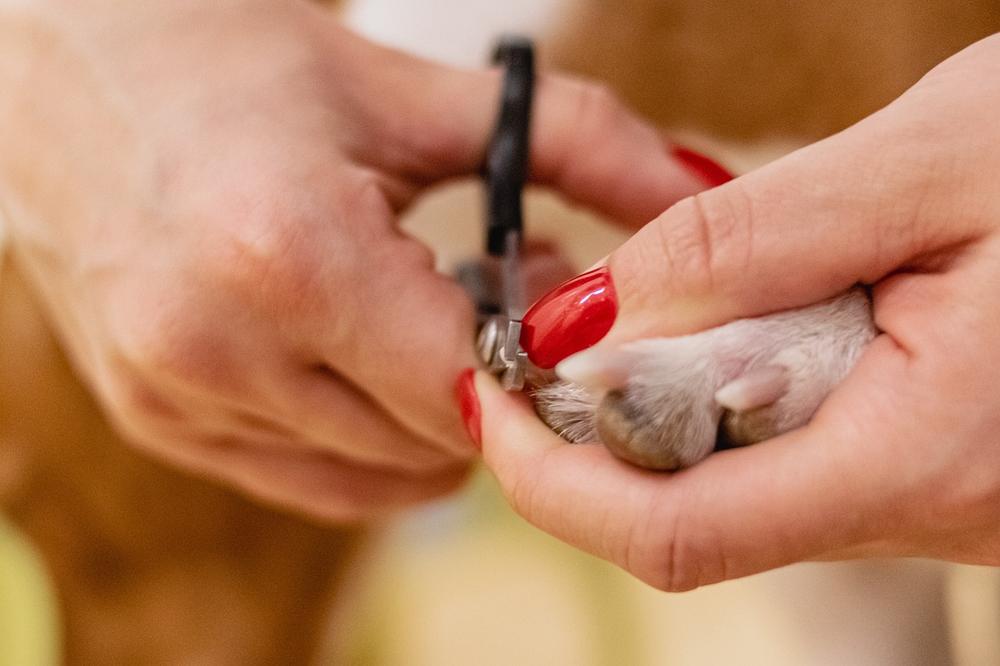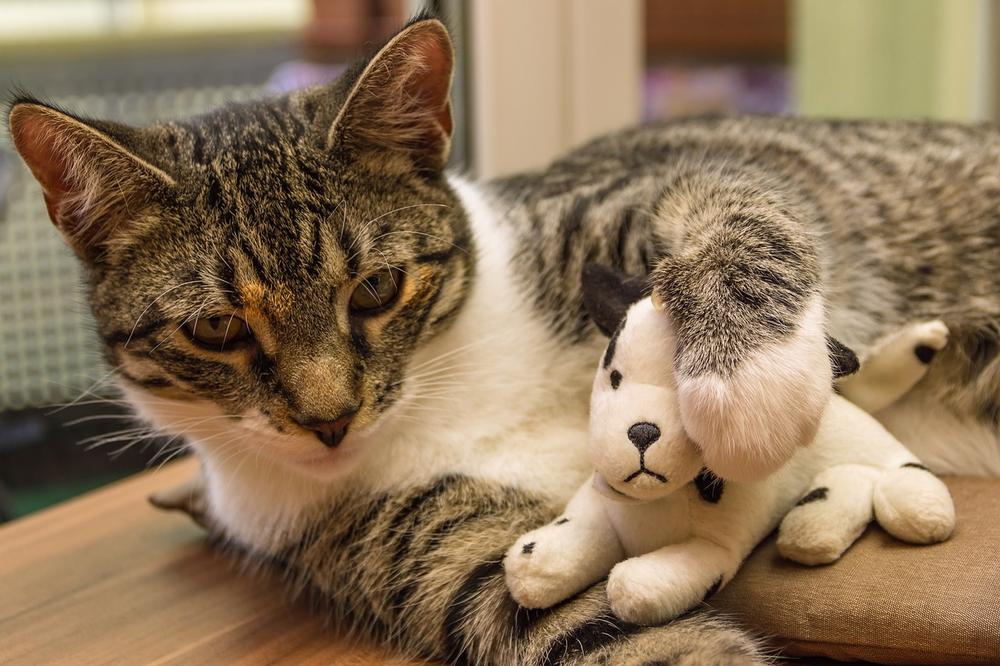What to Do if You Cut Your Cats Nail Too Short & It Bleeds

Oops!
Accidentally clipped your cat's nail a little too short, huh? 🙀
Blood starts pooling, panic sets in, and you're left wondering what in the whiskers to do.
Well, don't fret, my fellow feline fancier.
We've all been there, feeling like a total cat-astrophe.
But fear not!
I've got your back, and I'm here to unravel this nail-biting situation with you.
So hold your cat close, take a deep breath, and let's find out what to do when you make the "bleeding" obvious mistake.
Let's dive right in!
Cat Nail Bleeding: What to Do if You Accidentally Cut Too Short?
Steps to take when you accidentally cut your cat's nail too short
Oops!
It happens.
If you find yourself in the nerve-wracking situation of cutting your cat's nail too short, don't panic.
I've got some steps for you to follow that will help stop the bleeding and keep your furry friend comfortable.
What to do with styptic pencils or cauterizing powder
First, apply gentle pressure to the affected area using a clean cloth or tissue.
This will slow down the bleeding.
But if it doesn't stop within 5-10 minutes, you'll need a little help.
Get your hands on some styptic pencils or cauterizing powder.
These handy tools contain ingredients that can constrict blood vessels and promote clotting.
Just dab the cut nail with the styptic pencil or sprinkle some cauterizing powder over it.
Be careful while doing this, and if your cat doesn't like it, stop right away.
When to use cold compresses and seek veterinary care
In most cases, the bleeding should stop on its own within a few minutes.

But if it continues, there are a couple more options for you to try.
Using a cold compress can help reduce swelling and encourage clotting.
Simply wrap the compress in a thin cloth or towel and gently hold it against the nail for a few minutes.
If the bleeding persists or if you're worried about your cat's health, it's always better to seek veterinary care.
The professionals can assess the situation and provide necessary treatment.
They may need to apply bandages, prescribe antibiotic ointment or powder, and guide you through the recovery process.
Addressing the issue promptly helps prevent infection and promotes healing.
Don't hesitate to reach out to your vet for advice and guidance when needed.
And if you ever find yourself in a situation where you need to bury a beloved feline companion during the harsh winter months, I've got you covered.
You don't have to worry about the frozen ground making it difficult to lay your pet to rest.
I highly recommend checking out my article How to Bury a Cat During the Winter for a helpful guide on properly laying your cat to rest during these challenging times.
You'll find step-by-step instructions and tips to ensure a respectful and loving farewell.
What Happens if You Cut a Cat’s Nail Too Short?
Cutting a cat's nail too short may cause discomfort and minor bleeding. While it's usually not serious, damaged or excessively bleeding nails should be examined by a veterinarian. Cats' nails are sensitive and may bleed, but bandaging is typically unnecessary. Prioritize your cat's well-being and seek professional guidance if needed.
If you accidentally trim your cat's nail too short, don't worry.
It happens to all of us and it's not the end of the world.
When this happens, your cat may experience some discomfort or even pain.
But it's usually nothing serious.
Just make sure that you be extra careful next time.
You might notice some blood, but there's no need to panic.
The amount of blood lost from a nail cut is usually minimal.
It's not a big deal, really.
However, if the nail is damaged or bleeding excessively, it's best to consult your veterinarian for guidance.
They can safely clip the nail and provide necessary treatment.
Better safe than sorry, right?
During the healing process, your cat may feel some discomfort.

But don't worry, cats are resilient!
If the pain becomes an issue, your vet may prescribe pain medication to keep your furry friend comfortable.
The recovery period can vary, lasting anywhere from two to six weeks.
Each cat is different, so don't stress if the healing takes longer.
Just be patient.
By the way, cats' nails are sensitive, so they can bleed if cut too short.
The duration of the bleeding depends on the severity of the cut and their ability to clot.
In most cases, bandaging is not necessary.
However, if you want to provide extra protection during the healing process, a bandage could be beneficial.
Accidents happen. Take a deep breath, take precautions, and prioritize your cat's well-being.
You've got this, cat parent!
And now, let me give you some helpful tips to prevent future accidents while trimming your cat's nails!
May I suggest the following:
Trimming Cat Nails: Step-by-Step Guide to Prevent Bleeding
Trimming your cat's nails can be a tricky task, but with a step-by-step guide, you'll have it down pat in no time.

Now, before you start hacking away at those claws, let me give you some practical tips to prevent bleeding and keep your feline friend happy:
- Find the quick: The quick is the pink triangle located inside your cat's nail. It contains blood vessels and nerves, so cutting too close can cause bleeding. Your goal is to cut just below the quick to avoid any mishaps.
- Invest in cat nail clippers: Don't use regular nail clippers or scissors! Get yourself a pair of cat nail clippers designed specifically for pets. They are specially made to avoid crushing the nail and causing discomfort.
- Consistency is key: Aim to trim your cat's nails regularly to maintain their length and prevent them from becoming sharp and uncomfortable. Make sure all nails are trimmed properly for optimal comfort.
- Start small and gain confidence: If you're new to nail trimming, take it slow. Begin by snipping a small portion of the nail tip and gradually work your way up as you become more comfortable and confident.
- Maintain a safe length: Leave about 2 millimeters of nail length from the quick. This helps prevent bleeding and discomfort while keeping your cat's nails at a manageable length.
Always cut the nail parallel to the nail, starting from the top and cutting towards the bottom. 😺
With these tips in mind, you'll be a pro at trimming your cat's nails without any bleeds or tears.
Now that you know how to prevent bleeding while trimming your cat's nails, let me share the importance of regular nail maintenance!
Importance of Trimming Cat Nails
Trimming your cat's nails regularly is crucial for their safety and well-being. Overgrown nails can cause problems like getting stuck or tearing, leading to painful infections and injuries.
If your cat's nails are too long, they may pick up bacteria from the litter box during playtime, which could result in an infection.
To prevent these issues and keep your feline friend healthy, you need to trim their nails on a regular basis.
Take the time to care for your fur baby by keeping their nails in check—you'll ensure their comfort and ultimately avoid potential health risks.

And if you're concerned about your cat picking up bacteria from the litter box, I have a solution for you.
After all, I always prioritize my fur baby's hygiene and well-being.
That's why I wrote a guide that will show you exactly how to clean a cat's paws after using the litter box.
Trust me, it's a must-read for every cat owner.
Check out Cleaning Cats Paws After Litterbox and ensure your cat's paws stay clean and healthy.
How to Trim a Squirmy Cat’s Nails
Trimming your cat's nails doesn't have to be a big deal for either of you.

Here's how to make it easier:
- Create a calm and comfy spot for nail trims.
- Use treats, toys, or gentle encouragement to put your cat at ease.
- Press the toe pad gently to expose the nails if they're hard to see.
- Take breaks if your cat starts getting antsy or nervous.
- Snip just a little bit of the nail each time to avoid cutting too close.
- If your cat isn't in the mood, try again later when they're more relaxed.
- Stay patient and rewarding throughout the whole nail trimming session.
You can maintain your cat's nails in good condition without causing them any unnecessary anxiety by adhering to these basic instructions.
My Cat Won’t Let Me Trim Nails – What Should I Do?
Dealing with a stubborn cat who won't let you trim their nails can be frustrating. But fear not, because there are a few things you can do to make the process easier for both you and your furry friend:
- Start slow: Gradually introduce your cat to nail trimming by getting them comfortable with having their paws touched. You can do this by gently massaging their paws and providing treats or praise.
- Use positive reinforcement: Reward your cat with treats or praise during and after nail trimming sessions. This helps create a positive association with the experience and encourages cooperation.
- Try different tools: Experiment with different nail trimmers to find one that works best for you and your cat. Some options include guillotine-style trimmers, scissor-style trimmers, or even nail grinders.
- Enlist an extra pair of hands: If your cat is particularly resistant, ask someone to assist you in holding and calming them during nail trims.
- Consider professional help: If all else fails, seek assistance from a professional groomer or veterinarian. They have experience handling difficult cats and can provide guidance on proper nail trimming techniques.
Patience is key when it comes to nail trimming.
With time, practice, and persistence, you'll be able to maintain your cat's nail health without any issues.
Tips for Safe and Stress-Free Cat Nail Trimming
Key Takeaways:
- Apply pressure and use styptic pencils or cauterizing powder to stop bleeding.
- Wrap torn or broken nails in gauze or a towel and use styptic sticks or baking powder.
- Cold compresses can help reduce bleeding, but it usually stops on its own.
- Seek veterinary care if bleeding persists or in severe cases.
- Use antibiotic ointment or powder to prevent infection.
- Understand the anatomy of the cat's nails and clean the paw after bleeding stops.
- Cats may lose blood when nails are cut too short, but it's not dangerous.
- Visit a veterinarian for treatment and pain medicine if a nail is damaged.
- Healing for a clipped nail may take 2-6 weeks.
- Use cat nail clippers designed for pets and cut below the quick to avoid bleeding.
- Follow a consistent order when trimming nails and gradually gain confidence.
- Keep claws around 2mm from the quick to prevent bleeding and discomfort.
- Trim nails regularly to prevent overgrown nails and the risk of infection.
- Push the toe pad vertically to reveal nails if you can't see them.
- Seek help from cat lover communities, groomers, or veterinarians if needed.
And that wraps up today's article.
If you wish to read more of my useful articles, I recommend you check out some of these: Can I Have a Vet Over to My House, Fleas on Cats Face, Can You Shave a Cat to Get Rid of Fleas, and How to Give a Cat Saline Nose Drops
Talk soon,
-Sarah Davis